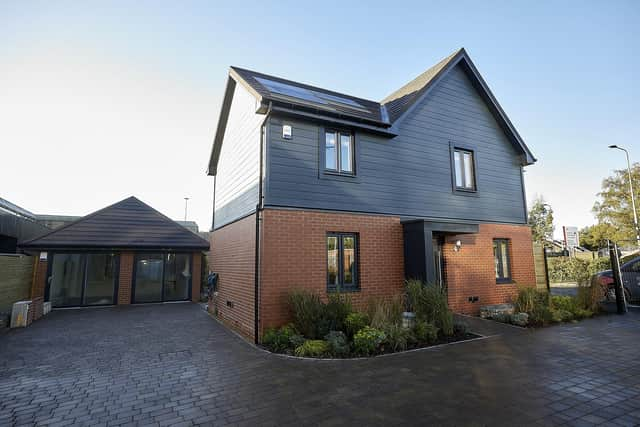How Barratt is blazing a trail to deliver energy efficient homes
The government’s Committee on Climate Change says that heating and powering buildings accounts for about 40 per cent of UK greenhouse gas emissions, with around 14 per cent coming from dwellings.
It would like to see full decarbonisation of buildings by 2050 and to achieve this, construction regulations will become increasingly more stringent.
Advertisement
Hide AdAdvertisement
Hide AdFrom 2025, there looks set to be a ban on gas and oil boilers in new homes with heating provided by low carbon alternatives, including air source heat pumps and, possibly, hydrogen boilers.


The Future Homes and Buildings Standard will also demand that newly constructed homes emit 75 to 80 per cent less carbon emissions than properties delivered under the old regulations.
So now the race is on to ensure that new-builds of the future meet upcoming government goals and blazing a trail is Barratt Homes, Britain’s biggest housebuilder.
The company constructs 18,000 properties a year and its ambition is to be the UK’s leading sustainable volume housing developer.
Advertisement
Hide AdAdvertisement
Hide AdIt is well ahead of the game, thanks, in part, to a collaboration with the University of Salford.
Barratt has built the Zed House in the university grounds, the first zero carbon home developed by a major housebuilder.
The pioneering property, built off-site using modern methods of construction, is part-funded by the government and is a partnership with over 40 organisations from the housebuilding, sustainability and technology sectors.
The state of the art house is being used by academics to monitor the most modern sustainable housing technologies, including an air source heat pump, infrared heating panels, plaster that eliminates pollutants, a fridge that keeps food fresh for longer, heated skirting boards, air-powered showers and photovoltaic solar panels with battery storage.
Advertisement
Hide Ad